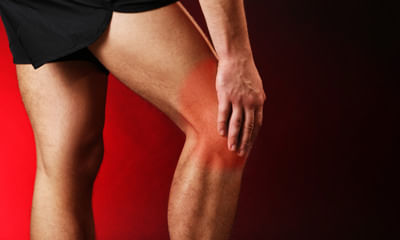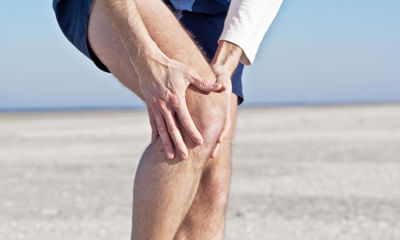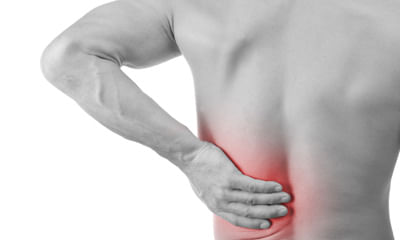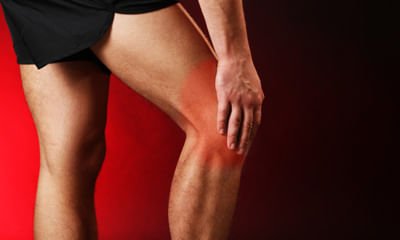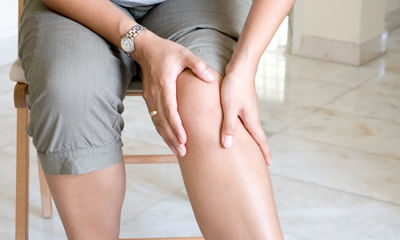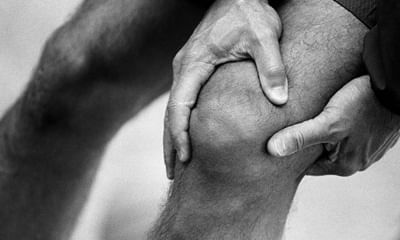Tibia Pain Below Knee
I have been diagnosed with spiking of tibia in my right knee with early osteophytes formation seen. Feel stiffness in kn ...
Ask Free Question
This is the common issue with all, go for an xray or mri of the knee joint and consult back with reports. Take calcium supplements, do knee strengthening exercises and hot pack with local diclofenac application twice a day for 5 days. Consult back with reports or in person with physical therapist and take us+ift for 5 days, the pain will be reduced.
I have a bucket handle meniscus tear and an acl tear. I can keep my knees straight but I cannot walk. My doctor is recom ...
Ask Free Question
Meniscus injury a torn meniscus can result from any activity that causes you to forcefully twist or rotate your knee, such as aggressive pivoting or sudden. What are 3 signs of a meniscus injury? Swelling or stiffness. Pain, especially when twisting or rotating your knee. Difficulty straightening your knee fully. Feeling as though your knee is locked in place when you try to move it. Typically, mild meniscus tears heal within two to three weeks. What is a meniscal injury? A meniscus tear is an injury to a part of your knee called the meniscus and is a common injury. The menisci are two crescent-shaped pads of thick, rubbery shock-absorbing cartilage in your knee joint. They lie between your thigh bone (femur) and your shin bone (tibia). In the case of meniscus tears, some people think the injury will heal over time on its own. But the truth is that there are different types of meniscus tears — and some tears won't heal without treatment. If your tear is on the outer one-third of the meniscus, it may heal on its own or be repaired surgically. If your doctor has told you that you don't need surgery to repair your torn meniscus, you may be given the green light to walk. However, you'll want to be very careful about movements that might worsen the tear or cause you pain. Avoid squatting and pivoting, which are likely to place too much pressure on the knee. To speed the recovery, you can: 1.Rest the knee. 2.Ice your knee to reduce pain and swelling. 3.Compress your knee. 4.Elevate your knee with a pillow under your heel when you're sitting or lying down. 5.Take anti-inflammatory medications. 6.Use stretching and strengthening exercises to help reduce stress to your knee. Will a knee brace help a torn meniscus? Yes. Although knee braces do not heal or treat your meniscus tear directly, they can provide extra support and stability for your knee while your meniscus injury heals. A good brace will protect your knee and take the pressure off your meniscus, allowing it to rest. Your doctor may recommend the rice regimen—rest, ice, compression, and elevation—to treat a meniscus tear. Resting your knee can help relieve your symptoms. Your doctor may suggest using a cane for a few weeks to keep weight off your knee and to stay away from physical activity that may have contributed to the injury. Steps to heal a torn meniscus naturally: rest: it's crucial to rest your knee after injury. You should not participate in activities where you could cause additional strain. Ice: apply ice to your knee for 15 minutes at four-hour intervals.
I had acl reconstruction plus complex lateral meniscus repair surgery on 22nd may, when can I start with partial weight ...
Ask Free Question
Meniscus injury a torn meniscus can result from any activity that causes you to forcefully twist or rotate your knee, such as aggressive pivoting or sudden. What are 3 signs of a meniscus injury? Swelling or stiffness. Pain, especially when twisting or rotating your knee. Difficulty straightening your knee fully. Feeling as though your knee is locked in place when you try to move it. Typically, mild meniscus tears heal within two to three weeks. What is a meniscal injury? A meniscus tear is an injury to a part of your knee called the meniscus and is a common injury. The menisci are two crescent-shaped pads of thick, rubbery shock-absorbing cartilage in your knee joint. They lie between your thigh bone (femur) and your shin bone (tibia). In the case of meniscus tears, some people think the injury will heal over time on its own. But the truth is that there are different types of meniscus tears — and some tears won't heal without treatment. If your tear is on the outer one-third of the meniscus, it may heal on its own or be repaired surgically. If your doctor has told you that you don't need surgery to repair your torn meniscus, you may be given the green light to walk. However, you'll want to be very careful about movements that might worsen the tear or cause you pain. Avoid squatting and pivoting, which are likely to place too much pressure on the knee. To speed the recovery, you can: 1.Rest the knee. 2.Ice your knee to reduce pain and swelling. 3.Compress your knee. 4.Elevate your knee with a pillow under your heel when you're sitting or lying down. 5.Take anti-inflammatory medications. 6.Use stretching and strengthening exercises to help reduce stress to your knee. Will a knee brace help a torn meniscus? Yes. Although knee braces do not heal or treat your meniscus tear directly, they can provide extra support and stability for your knee while your meniscus injury heals. A good brace will protect your knee and take the pressure off your meniscus, allowing it to rest. Your doctor may recommend the rice regimen—rest, ice, compression, and elevation—to treat a meniscus tear. Resting your knee can help relieve your symptoms. Your doctor may suggest using a cane for a few weeks to keep weight off your knee and to stay away from physical activity that may have contributed to the injury. Steps to heal a torn meniscus naturally: rest: it's crucial to rest your knee after injury. You should not participate in activities where you could cause additional strain. Ice: apply ice to your knee for 15 minutes at four-hour intervals.
In a bike accident, I met with an injury of medial meniscus horizontal tear for the right leg. I'm interested to hear ab ...
Ask Free Question
Meniscus injury a torn meniscus can result from any activity that causes you to forcefully twist or rotate your knee, such as aggressive pivoting or sudden. What are 3 signs of a meniscus injury? Swelling or stiffness. Pain, especially when twisting or rotating your knee. Difficulty straightening your knee fully. Feeling as though your knee is locked in place when you try to move it. Typically, mild meniscus tears heal within two to three weeks. What is a meniscal injury? A meniscus tear is an injury to a part of your knee called the meniscus and is a common injury. The menisci are two crescent-shaped pads of thick, rubbery shock-absorbing cartilage in your knee joint. They lie between your thigh bone (femur) and your shin bone (tibia). In the case of meniscus tears, some people think the injury will heal over time on its own. But the truth is that there are different types of meniscus tears — and some tears won't heal without treatment. If your tear is on the outer one-third of the meniscus, it may heal on its own or be repaired surgically. If your doctor has told you that you don't need surgery to repair your torn meniscus, you may be given the green light to walk. However, you'll want to be very careful about movements that might worsen the tear or cause you pain. Avoid squatting and pivoting, which are likely to place too much pressure on the knee. To speed the recovery, you can: 1.Rest the knee. 2.Ice your knee to reduce pain and swelling. 3.Compress your knee. 4.Elevate your knee with a pillow under your heel when you're sitting or lying down. 5.Take anti-inflammatory medications. 6.Use stretching and strengthening exercises to help reduce stress to your knee. Will a knee brace help a torn meniscus? Yes. Although knee braces do not heal or treat your meniscus tear directly, they can provide extra support and stability for your knee while your meniscus injury heals. A good brace will protect your knee and take the pressure off your meniscus, allowing it to rest. Your doctor may recommend the rice regimen—rest, ice, compression, and elevation—to treat a meniscus tear. Resting your knee can help relieve your symptoms. Your doctor may suggest using a cane for a few weeks to keep weight off your knee and to stay away from physical activity that may have contributed to the injury. Steps to heal a torn meniscus naturally: rest: it's crucial to rest your knee after injury. You should not participate in activities where you could cause additional strain. Ice: apply ice to your knee for 15 minutes at four-hour intervals.
My daughter 20 years old football player her left leg meniscus tear 3rd grade I want to know surgery cost parekh hospita ...
Ask Free Question
Meniscus injury a torn meniscus can result from any activity that causes you to forcefully twist or rotate your knee, such as aggressive pivoting or sudden. What are 3 signs of a meniscus injury? Swelling or stiffness. Pain, especially when twisting or rotating your knee. Difficulty straightening your knee fully. Feeling as though your knee is locked in place when you try to move it. Typically, mild meniscus tears heal within two to three weeks. What is a meniscal injury? A meniscus tear is an injury to a part of your knee called the meniscus and is a common injury. The menisci are two crescent-shaped pads of thick, rubbery shock-absorbing cartilage in your knee joint. They lie between your thigh bone (femur) and your shin bone (tibia). In the case of meniscus tears, some people think the injury will heal over time on its own. But the truth is that there are different types of meniscus tears — and some tears won't heal without treatment. If your tear is on the outer one-third of the meniscus, it may heal on its own or be repaired surgically. If your doctor has told you that you don't need surgery to repair your torn meniscus, you may be given the green light to walk. However, you'll want to be very careful about movements that might worsen the tear or cause you pain. Avoid squatting and pivoting, which are likely to place too much pressure on the knee. To speed the recovery, you can: 1.Rest the knee. 2.Ice your knee to reduce pain and swelling. 3.Compress your knee. 4.Elevate your knee with a pillow under your heel when you're sitting or lying down. 5.Take anti-inflammatory medications. 6.Use stretching and strengthening exercises to help reduce stress to your knee. Will a knee brace help a torn meniscus? Yes. Although knee braces do not heal or treat your meniscus tear directly, they can provide extra support and stability for your knee while your meniscus injury heals. A good brace will protect your knee and take the pressure off your meniscus, allowing it to rest. Your doctor may recommend the rice regimen—rest, ice, compression, and elevation—to treat a meniscus tear. Resting your knee can help relieve your symptoms. Your doctor may suggest using a cane for a few weeks to keep weight off your knee and to stay away from physical activity that may have contributed to the injury. Steps to heal a torn meniscus naturally: rest: it's crucial to rest your knee after injury. You should not participate in activities where you could cause additional strain. Ice: apply ice to your knee for 15 minutes at four-hour intervals.
I'm uma, 25 age. I diagnosed with pcl buckling. Please do suggest me what should I do to avoid surgery. Technique sequen ...
Ask Free Question
The typical symptoms of a posterior cruciate ligament injury are: •pain with swelling that occurs steadily and quickly after the injury. •swelling that makes the knee stiff and may cause a limp. •difficulty walking. •the knee feels unstable, like it may "give out" the posterior cruciate ligament (pcl) is the strongest ligament in the knee. It extends from the top-rear surface of the tibia (bone between the knee and ankle) to the bottom-front surface of the femur (bone that extends from the pelvis to the knee). Can you walk with a pcl injury? It depends. In mild cases, people may still be able to walk and their symptoms may be less noticeable. However, many people have difficulty walking after a pcl injury — especially if the damage is severe. 1 pcl injuries are usually partial ligament tears, and typically heal on their own, without causing stability issues, so long as the knee is protected during healing, and there are no other knee joint injuries treatment 1.Rest the joint to prevent further injury. 2.Ice the injured area to reduce swelling. 3.Compress the joint with an elastic bandage. 4.Elevate the leg when at rest. Around 9 weeks post-injury, the patient can initiate a light running program and gradually return to sports activities through week 12. Criteria to return to sport: absence of pain and swelling. No detectable laxity within the injured knee. many grade I and grade ii injuries will not require pcl surgery. Surgery is often recommended when there is a complete tear of the pcl, if there is also damage to surrounding ligaments, or if the knee has become dangerously unstable. The pain from an acl tear usually will be more severe than that of a pcl tear. There also may be significant (or total) loss of range of motion of the knee. Swelling from an acl tear tends to develop slowly, over the course of 24 hours. The pcl is broader and stronger than the acl and has a tensile strength of 2000 n. Injury most often occurs when a force is applied to the anterior aspect of the proximal tibia when the knee is flexed. Hyperextension and rotational or varus/valgus stress mechanisms also may be responsible for pcl tears. How can I strengthen my knee after pcl tear? Knee flexion with heel slide 1.Lie on your back with your knees bent. 2.Slide your heel back by bending your affected knee as far as you can. Then hook your other foot around your ankle to help pull your heel even farther back. 3.Hold for about 6 seconds, then rest for up to 10 seconds. 4.Repeat 8 to 12 times. The pcl heals without surgery key results from two studies show that: isolated pcl tears heal without surgery. Some laxity does not reduce activity, strength or range of motion. The incidence of moderate to severe osteoarthritis is the same for non-operative treatment and pcl reconstruction. How do you treat a pcl injury? Immediate treatment for pcl injuries includes the following: 1.Applying ice to reduce swelling. 2.Elevating your knee to reduce swelling. 3.Placing the knee in a splint to limit movement. 4.Taking nonsteroidal anti-inflammatory drugs (nsaids) to ease pain and swelling. 5.Compressing your knee using an elastic bandage or brace. If enough of the ligament is intact, the damaged pcl may be reattached to the bone. Any tears in the ligament will be repaired. If the pcl needs to be reconstructed, a tendon from another part of the body or a donor will be used. The remains of the damaged ligament will be cleaned away from the knee joint.
I am suffering from cerebral palsy spasticity since birth for last few years I am experiencing more spasticity, muscular ...
Ask Free Question
This kind of diseases cannot be prescribed over the counter. It requires proper consultation, a valid prescription after going through all the details and regular follow-ups to evaluate the response of the medicine for further plan of action. Feel free to consult for homeopathic treatment online.
I am suffering from cerebral palsy spasticity since birth now for last one week experience neck muscle spasm, pain and s ...
Ask Free Question
I am sorry to hear that you are still suffering. The cervical spinal problem can be discussed with neurosurgeon. There is no specific curative therapy for knee degenrative changes escept hot fomentation, analgesia and avoidance of excessive knee bending and maintaining a healthy body weight. However, there are some antispasmodics that can reduce muscle spasm.
I have done proximal tibia surgery after fracture. Now my knee has little swelling and it is very stiff. I can't bend it ...
Ask Free Question
I am sorry to hear about your concern but will be happy to assist you. Recovery time for a tibia fracture typically takes 4-6 months to heal completely. If the fracture is open or comminuted, healing time may take longer. Your doctor will often prescribe medications for pain-relief for a short period of time after the injury or surgery. Let's connect over a call so that we can discuss your concern in details and make a suitable treatment plan for you.
Sir, I have undergone mri of left knee when it started making sounds and slight pain when climbing steps. My results are ...
Ask Free Question
Ice therapy would definitely help to reduce the inflammation. We also advise you to use knee cap which would help to prevent the knee from damaging further and also to maintain the quadriceps muscle tone. Stiffness have developed due to weakness of the ligaments &inflammed cartilage. Specific knee exercises will also help ie. Keeping ball underneath the knee and keep pressing it. That's the simple exercise which will help you to strengthen the knee. •ultrasound- which heals the damaged tissues and heals •electric stimulation / ift- which reduces the pain •kinesiology taping •application of heat or ice •soft tissue massages or knee joint mobilization 5 do’s & don’ts to reduce your knee pain. 1.Don’t take too much rest- not only your body muscles may become weaker even your joint’s pain may become worse. Take consultation from your physiotherapist to guide you with knee pain exercises which are safe for your knees & keep doing it. 2.Do exercise– exercises help in strengthening the muscles, increase flexibility & also support your knee. You can also do swimming, walking, elliptical machines & bicycles, etc. 3.Don’t avoid your weight– excess weight may increase the stress on your knee and if you have inflammatory arthritis then it may become worse. You don’t need to have ideal weight, you just need to start working to reduce the weight. 4.Rice -this process is good for joint pain caused due to minor injury or an arthritis. ••r (rest) – give some rest to your knees. •I (ice) – massage your knees with ice to reduce swelling. •c (compression)- start wearing compression bandage. •e (elevation)- keep your knee elevated. 5.Don’t wear bad shoes- we actively wear shoes in our daily life for hours without noticing how it can affect your knees badly. So, if you are facing knee pain, then check your shoes first. Is it giving you good comfort? If not then change it urgently. The importance of buying braces and splints from us – orthopaedic support braces we suggest you to wear knee brace which is available at our clinic. If you want you can buy from us, if you are far away from chennai we can send you by courier. The reason why we are conveying you to buy from us is we can demonstrate over the videocall (using whatsapp) and also we can monitor you throughout when to wear it and how long to wear it. And also if you find any difficulty wearing the brace you can also revert back to us for few more suggestions and we can propose you good solution how to go about it. Resisted terminal knee extension: make a loop with a piece of elastic tubing by tying a knot in both ends. Close the knot in a door at knee height. Step into the loop with your injured leg so the tubing is around the back of your knee. Lift the other foot off the ground and hold onto a chair for balance, if needed. Bend the knee with tubing about 45 degrees. Slowly straighten your leg, keeping your thigh muscle tight as you do this. Repeat 15 times. Do 2 sets of 15. If you need an easier way to do this, stand on both legs for better support while you do the exercise. Standing calf stretch: stand facing a wall with your hands on the wall at about eye level. Keep as arthritis is very common that you get generally bilaterally. Ice therapy would definitely help to reduce the inflammation. We also advise you to use knee cap which would help to prevent the knee from damaging further and also to maintain the quadriceps muscle tone 1. Heel and calf stretch to do this stretch: 1.Stand facing a wall. 2.Place your hands on the wall and move one foot back as far as you can comfortably. Toes on both feet should be facing forward, heels flat, with a slight bend in your knees. 3.Lean into the stretch and hold for 30 seconds. You should feel the stretch in your back leg. 4.Change legs and repeat. 5.Do this stretch twice for both legs. Short arc quad / isometeric quad exercise the short arc quad exercise is a great way to really focus in on properly contracting your quadriceps muscles. Here is how you do it: lie on your back and use a yoga block or basketball to prop your knee up. Slowly straighten your bent knee until it is all the way straight. Tighten your quad muscle with your toes pointed toward the ceiling and hold it tight for five seconds. Slowly lower your leg down. Repeat for 15 repetitions. Quadriceps, isometric (strength) this exercise is for an injured right knee. Switch sides if the injury is to your left knee. 1.Sit on the floor with your right leg straight in front of you. Bend your left knee up and put your left foot flat on the floor. 2.Flex your right foot and tighten the thigh muscles of your right leg. Press the back of your right knee toward the floor. Don’t arch your back or hunch your shoulders. 3.Hold for 5 to 10 seconds. Then relax. 4.Repeat 10 times, or as instructed. 5.Do this exercise 3 times a day, or as instructed. 2. Quadriceps stretch to do this stretch: 1.Stand next to a wall or use a chair for support. Your feet should be shoulder-width apart. 2.Bend one knee so your foot goes up toward your glutes. 3.Grab your ankle and gently pull it toward your glutes as far as you can comfortably. 4.Hold for 30 seconds. 5.Return to the starting position and change legs. 6.Repeat 2 times on each side. Hamstring stretch •take a break from strenuous activities to allow the injury to heal. •use a cane or crutches to avoiding putting your full weight on your injured leg. •apply ice packs several times a day to relieve pain and reduce swelling. •wrap the injured area with a compression bandage or wear compression shorts to minimize swelling. •rest with your leg elevated above the level of your heart, if possible, to improve drainage and minimize swelling. To do this stretch: to do this stretch: 1.For this stretch, you can use a mat to add cushioning under your back. 2.Lie down on the floor or mat and straighten both legs. Or, if it’s more comfortable, you can bend both knees with your feet flat on the floor. 3.Lift one leg off the floor. 4.Place your hands behind your thigh, but below the knee, and gently pull your knee toward your chest until you feel a slight stretch. This shouldn’t be painful. 5.Hold for 30 seconds. 6.Lower and change legs. 7.Repeat 2 times on each side. Strengthening exercises 5.Half squat to do this exercise: 1.Get into a standing squat position with your feet shoulder-width apart. Place your hands on your hips or out in front of you for balance. 2.Looking straight ahead, slowly squat down about 10 inches. This is the halfway point to a full squat. 3.Pause for a few seconds, then stand up by pushing through your heels. 4.Do 2 to 3 sets of 10 repetitions. 5. Calf raises to do this exercise: 1.Stand with your feet shoulder-width apart. Position yourself next to a wall or hold on to the back of a chair for support. 2.Lift both your heels off the ground so that you’re standing on the balls of your feet. 3.Slowly lower your heels to the starting position. Control is important with this exercise for strengthening your calf muscles. 4.Do 2 to 3 sets of 10 repetitions. 6. Hamstring curl 7. Leg extensions to do this exercise: 1.Sit up tall in a chair. 2.Put your feet flat on the floor, hip-width apart. 3.Look straight ahead, contract your thigh muscles, and extend one leg as high as possible without raising your buttocks off the chair. 4.Pause, then lower to the starting position. 5.Do 2 to 3 sets of 10 repetitions for each leg. 8. Straight leg raises to do this exercise: 1.For this exercise, you can use a mat to add cushioning under your back. 2.Lie down on the floor with one leg bent and one leg straight out in front of you. 3.Contract the quadricep of your straight leg and slowly raise it up off the floor until it’s the same height as your bent knee. 4.Pause at the top for 5 seconds, then lower to the starting position 5.Do 2 to 3 sets of 10 repetitions for each leg. 9. Side leg raises to do this exercise: 1.Lie on your side with your legs stacked on top of each other. Cradle your head in your hand, and place your other hand on the floor in front of you. 2.Raise your top leg as high as you comfortably can. You should feel this on the side of your hips. 3.Pause briefly at the top, then lower your leg. 4.Do 2 to 3 sets of 10 repetitions for each leg. 10. Prone leg raises to do this exercise: 1.For this exercise, you can use a mat to add cushioning beneath you. 2.Lie on your stomach with your legs straight out behind you. You can let your head rest on your arms. 3.Engage your glute and hamstring muscles in your left leg and lift your leg as high as you comfortably can without causing pain. Be sure to keep your pelvic bones on the floor throughout this exercise. 4.Hold your leg in the lifted position for 5 seconds. 5.Lower your leg, rest for 2 seconds, then repeat. 6.Do 2 to 3 sets of 10 repetitions for each leg. Lifestyle and home remedies rest. Take a break from your normal activities to reduce repetitive strain on your knee, give the injury time to heal and help prevent further damage. A day or two of rest may be all you need for a minor injury. More severe damage is likely to need a longer recovery time. Ice. Ice reduces both pain and inflammation. A bag of frozen peas works well because it covers your whole knee. You also can use an ice pack wrapped in a thin towel to protect your skin. Although ice therapy is generally safe and effective, don't use ice for longer than 20 minutes at a time because of the risk of damage to your nerves and skin. Heat. You may experience temporary pain relief by applying a heat pack or hot-water bottle to the painful area on your knee. Compression. This helps prevent fluid buildup in damaged tissues and maintains knee alignment and stability. Look for a compression bandage that's lightweight, breathable and self-adhesive. It should be tight enough to support your knee without interfering with circulation. Elevation. To help reduce swelling, try propping your injured leg on pillows or sitting in a recliner.

